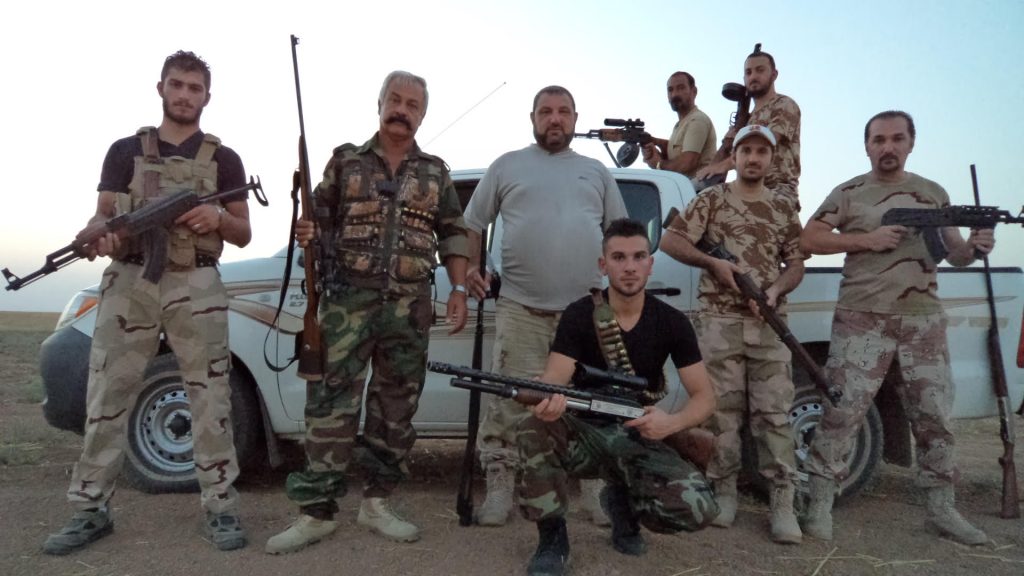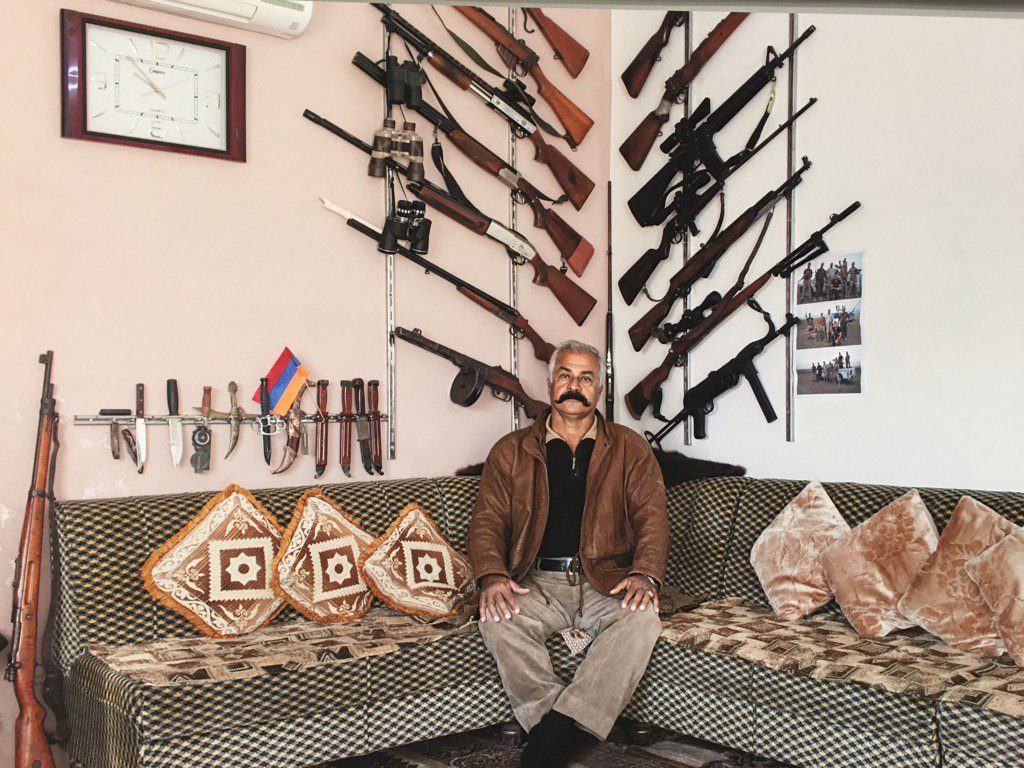By Baruyr Hagopian
Baruyr Hagopian is the former chair of the Diocesan Assembly of the Armenian Church of Iraq. This article originally appeared in Horizon Weekly (in Armenian) on Jan. 9, and was translated by the Armenian Weekly.
***
After reading several articles, I learned that a filmmaker named David Ritter has recently made a documentary film on the Armenian village of Havresc in northern Iraq and has presented it to a number of Armenian communities in the Diaspora. I also learned that 30 percent of the film’s DVD sales will be donated to the village of Havresc
In addition, a lengthy article titled “The Forgotten Armenians of Iraq’s Kurdistan” (AGBU Magazine, Feb. 2016) by Asbed Kotchikian has been circulating in various publications.
Several publications throughout the Armenian world have been publishing articles about Havresc and the film. Unfortunately, both Ritter’s film and Kotchikian’s article provide some inaccurate and incorrect information.
I am confident that while errors exist in both the film and in the article, both Ritter and Kotchikian have done their work in good faith and with the desire to help the village.
Although Ritter has spent time living there, is clear that the information gathered about the Havresc was not retrieved from the most reliable sources and appears to be incomplete
Therefore, in order to clarify, I have provided the following corrections:
- Unfortunately, I have not seen Ritter’s film. What I gather from what I have read (in interviews and articles about the film) is that the men who defend the streets of Havresc are portrayed as an Armenian force created to fight ISIS. This is incorrect.The implementation of men guarding the village is nothing new. It was enacted before ISIS had even reached Iraq. At the request of the village and the help of the Armenian Diocese of Baghdad, the offices of Iraqi Assyrian politician Sarkis Aghajan promised to place the young men of the village as guards and pay them monthly salaries. This was agreed by the regional Kurdish authorities (the situation is the same in the Assyrian villages).The villages are guarded by brave, dedicated, and patriotic young men whose only job is to protect the village. It is wrong to create the impression that these village guards were created in order to fight ISIS. Recently, the situation has changed as ISIS has gotten closer to the region. These men are prepared to defend their village, even if they do not have the strongest firepower. It is best not to publicize the presence of these men, for the sake of the village’s safety.
- About the village of Havresc…After the Armenian refugees of the Armenian Genocide dispersed from the Nahr El-Omar refugee camp, Levon Pasha Shaghoyan—the Chair of Migration Committee—requested a plot of land from the British government for the remaining refugees. With the help of the British, the newly formed Iraqi government approved the request for the plot of land and gave the Armenians a section in the northern region of Iraq—Havresc. The land was deserted and no buildings had ever been constructed there. It had been a place where the Kurdish population herded sheep and was potentially inhabited during ancient times. The first group of refugees arrived on Oct. 18, 1929, under the leadership of Kegham Vartanian. Once the founding ceremony took place on Oct. 19, the village was officially established (this information was received from Kegham Vartanian’s National Almanac).Unfortunately, many people are confused about the name of the village, as “Havresc” continues to be interpreted in many different ways. Some say it means “Armenian Vrej (revenge)” while others say “Great Vrej.” This provides the impression that Armenians named Havresc based on the word Vrej. All of these assumptions are incorrect. Havresc was already the name of the land prior to the arrival of the Armenians. Armenians arrived to the region and established the village. All state archives that include Kegham Vartanian’s signed contract with the state are proof of that.
The village experienced great development in the 1930’s, including the establishment of a church and school. With further development, it became an Armenian center. At certain points, the young people of the village began to gradually leave in order to find jobs, especially when the Iraqi oil companies were in need of employees. Havresc remained in existence until 1975 when the Iraqi government began emptying all the villages in the area due to the Kurdish movement. The remaining population of Harvresc left after finding work.
In 2003 when Kurdistan began making bigger moves towards development, all the residents of the destroyed villages were encouraged to return to their homes and rebuild their villages. In 2005, Shant Haroutunian from Baghdad and a few other families were the first to return to a deserted Havresc. They ended up establishing residence in the ruined school.
Sarkis Aghajan had already begun implementing the rebuilding of all the Assyrian villages in northern Iraq, which included renovating churches and providing financial assistance. The Armenian Diocese of Iraq took similar measures and, within a year, the houses in the village were all rebuilt and the members of the Armenian community who were living in unsafe regions in Iraq moved to Havresc. The Diocesan Assembly of the Armenian Church of Iraq appointed a committee in charge of governing the village. This governing body always operates under the supervision of the Diocese.
At first, Ohan Janoyan was appointed as village Mukhtar (mayor), but in recent years, the position has been transferred to Murad Vartanian—who, as a member of the Kurdish Party—holds responsibility for the village’s safety.
Havresc is home to about 110 houses, some of which are Assyrian. All households receive monthly financial assistance from the offices of Sarkis Aghajan in addition to different types of assistance provided by the Diocese. A church was also built by a charitable German institution with the help of the Diocese.
A deacon from Havresc was then sent to Etchmiadzin in order to become an ordained priest, so that he may return and serve in Havresc. The government has opened a school where the Armenian language and religion are taught. In addition, Armenian Diocese has donated a bus to the village committee, so students receiving secondary and higher education in Dohuk have a ride to and from school. The bus is also used for other necessities in the village. The Armenian Diocese and the Diocesan Assembly closely monitor the conditions and the financial and social needs of the community in order to provide necessary support.
Kurdistan authorities have begun the construction of a large airport near the village of Havresc, which is expected to be the biggest airport in the northern region (construction is currently at a halt). A concern for the leaders of the Armenian Diocese and the Diocesan Assembly has been whether the airport will cause the residents to make the decision to move to nearly areas. The Diocese continues to work towards the return of the lands belonging to the villagers, so that the villagers can continue to live their rural village life.
During the Centennial of the Armenian Genocide, the Armenian Diocese of Iraq had 10 Armenian khachkars (cross stones) made in Armenia to be donated to the Armenian churches in Iraq. The Armenian church in Havresc also received an Armenian cross stone.
- “Following World War I, thousands of Armenian Genocide survivors from Anatolia settles in Mosul, while others continued their journey to Baghdad and Basra,” Kotchikian writes in his article. In reality, those refugees who settled in Iraq came from two directions: from the direction of Mosul (but not in thousands), and (a vast majority) from Vasburagan to Iran, and finally settling Iraq. Initially, they settled in refugee camps Bakuba then in Nahr El-Omar, in an arrangement by the British army.
- According to Kotchikian, the village of Avzrug was created by Armenian and Assyrian settlers. This is also incorrect. The village of Avzrug is completely populated by Kurdish-speaking Armenians. There is an Armenian Armenian Apostolic Church there, which has its own board. The church in Avzrug also received an Armenian cross stone during the Armenian Genocide Centennial. No non-Armenian has ever lived there.
- Is the title of Kotchikian’s article “The Forgotten Armenians of Iraqi Kurdistan” directed at the diaspora or the leaders of the Armenian community of Iraq? The Armenian community of Iraq is a well-organized community with the leadership of the Prelate, its Diocesan Assembly, and other community institutions, which have never forgotten about the village of Havresc.The prelate and the Diocesan Assembly have continuously visited the area and provided financial and moral support to the best of their abilities. With the assistance of the Diocese, the needs of the neighboring Armenian communities in villages such as Dohuk, Erbil, and Zakho have also been addressed. In recent years, Armenian churches have been built in Havresc, Avzrug, Dohuk, and Kirkuk. Construction for a church in Erbil has begun, but has not yet been completed.
The Iraqi Armenians have never forgotten about their brothers in the north. I ask all those who plan on writing or publishing about Havresc to collect their information from reliable sources.
Source: Armenian Weekly
Link: Some Clarifications About Havresc


